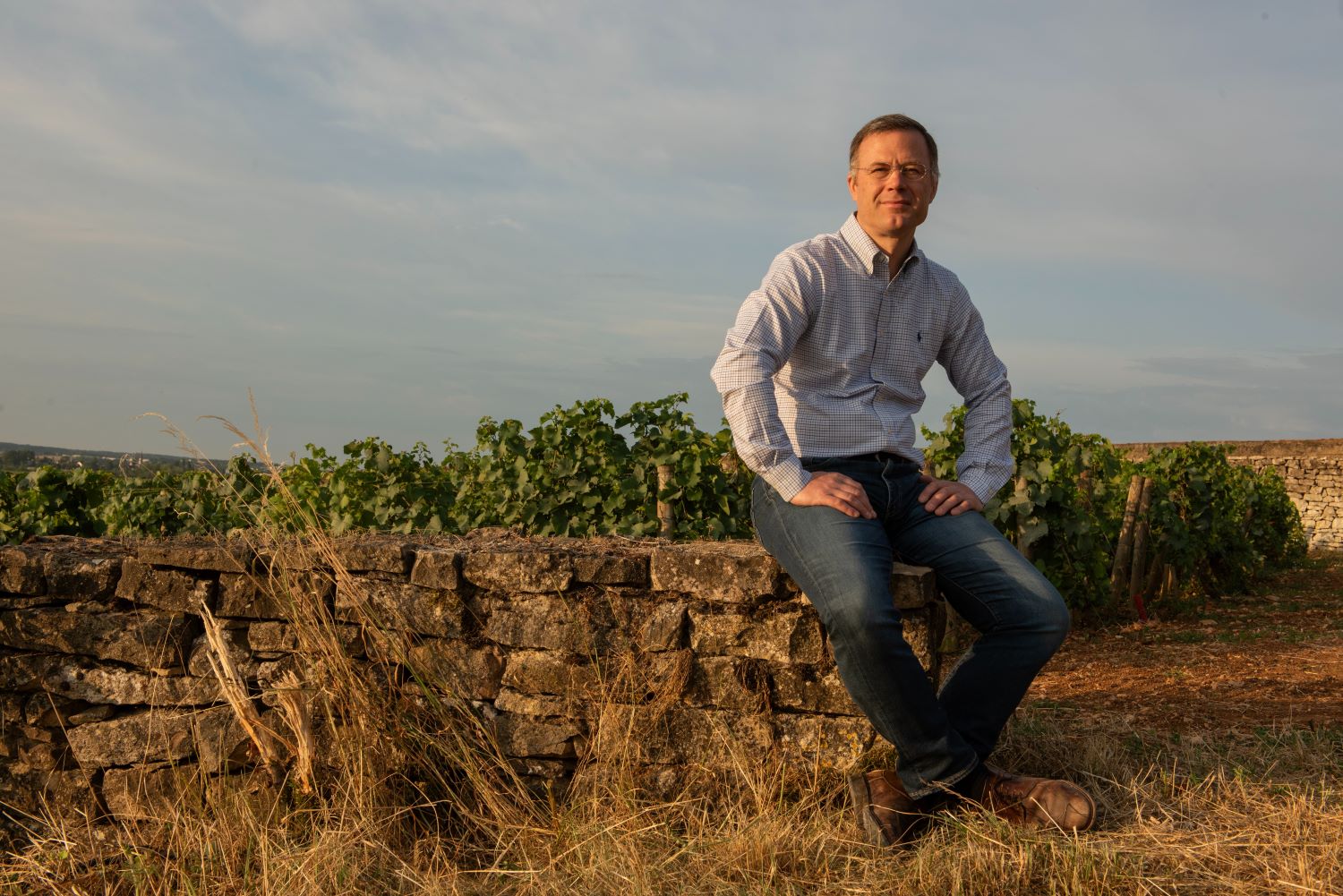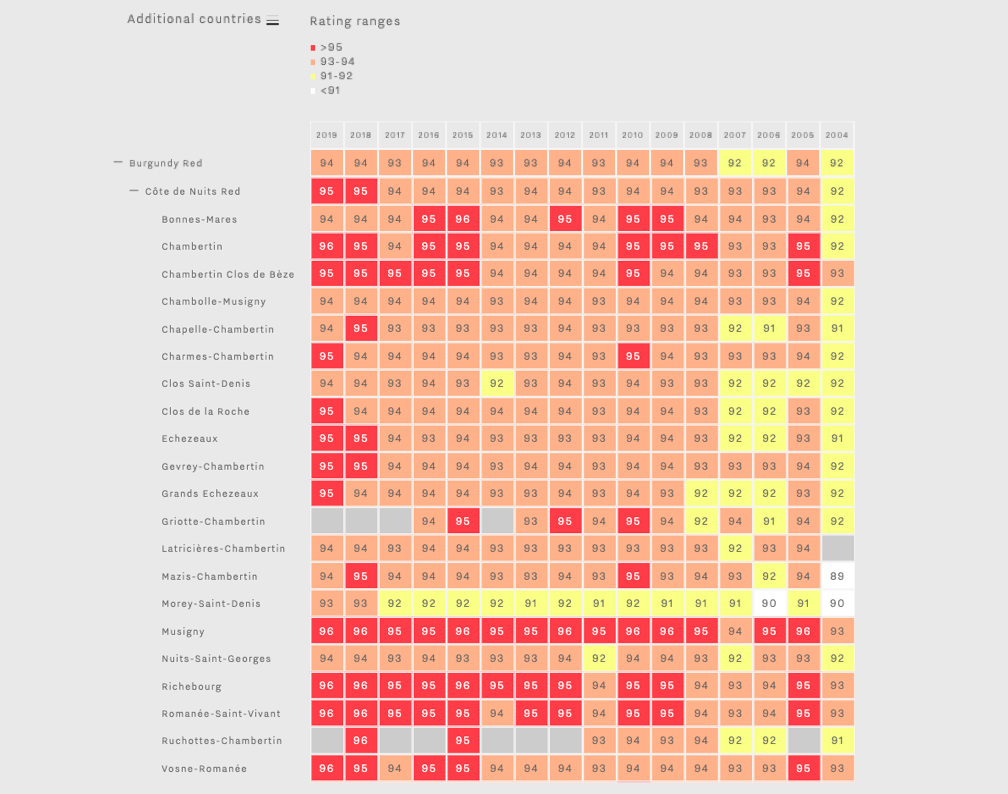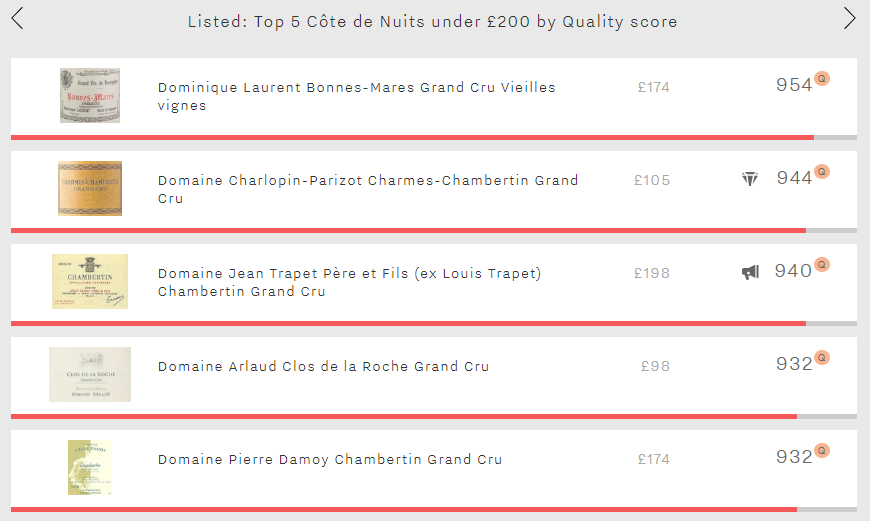France’s 50 best winemakers: Jacques Devauges of Domaine des Lambrays
Burgandy’s talented winemaker: “I juice myself up on Pinot Noir”.
For the 40th interview in Le Figaro Vin’s series, we return to the Morey-Saint-Denis to meet Jacques Devauges, who stands at #10 in the rankings. A staunch supporter of the Côte-de-Nuits, he is an advocate of excellence. From one estate to the next, he continues to pursue the same goal: expressing the nobility of the Morey-Saint-Denis terroir.
The former manager of Clos de Tart between 2015 and early 2019, Jacques Devauges joined Domaine des Lambrays that same year, moving from an estate owned by François Pinault to one owned by Bernard Arnault. It was “chance and a series of encounters”, he explains, that brought him to where he is today. Although nothing predestined him for the world of winemaking, he fell in love with it during a harvest season, with his baccalauréat in hand, at a small estate in Pommard. “After that, I met some intelligent people who put their trust in me”, he says with humility. Today, as head of Domaine des Lambrays, a leading Côte-de-Nuits estate, he intends to continue the work of his predecessors, while instilling a new energy and uniting a team around his most deeply held principles. Here, we talk to a modest man who listens attentively to his terroir.

Le Figaro Vin: How does it feel to be crowned a winemaking champion?
I distance myself a lot from these things. I’m incredibly lucky to be doing a job that I’m passionate about. When you get up in the morning and love what you do, everything is easy. So, I don’t see myself as a champion. The Arnault family trusts me and has handed me the opportunity to work with some extraordinary plots.
Have you been training for long?
I chose to work in the field. I have a degree in oenology, of course, but I started from the ground up.
Who is your mentor?
I didn’t really have one mentor in particular. I met Denis Mortet, a winemaker from Morey-Saint-Denis, who helped me a lot when I didn’t know anyone, then Christian Seely, the President of Axa Millésimes, who gave me the keys to the Domaine de l’Arlot, and finally Sylvain Pitiot, who I consider to be one of the greatest Burgundian winemakers, as much for his professionalism as for his warm personality.
Is wine a team sport?
Completely. You can’t do anything on your own. Before we talk about the wine, we talk about the vine. The sense of team spirit is strong because it’s rooted in time. It’s not just a horizontal team but also a vertical one, across the generations, and that’s what I find so powerful about our profession. It’s a real pleasure to come into a field and get your teams motivated by a project. You can’t have a vision on your own. You have to get everyone on board, not just the team, but your customers too.
What is the key to making a good wine? The terroir or the winemaker?
The terroir of course. It’s a bit of a cliché, but you need a great winemaker to make a great wine, it’s a symbiotic relationship. The climate is just as important as the soil and the work of the winemaker. All these elements have to be present for a wine to inspire emotion. That’s not to say that you should only drink grands crus costing thousands of euros. Emotion is the alchemy of a whole range of elements. That’s why wine is so fascinating.
To what do you owe your success?
I see myself as a student. Every year brings a new challenge, and you have to try new things, so I can’t explain my success, because I learn something new every year. This desire to adapt and observe is essential. You must remain humble and curious, and strive to produce pure, precise, clean wines that fully reflect the place from which they come.
Is your family proud of you?
My mother is, and always has been – that’s a mother’s role.
What is your favourite colour?
A very distinctive colour, that of very old Burgundies from the 1920s and 1930s, up to 1940. Pale in intensity, with a pinkish transparency and hints of faded pink, it could almost be a shade of tea. In a nutshell, somewhere between aged pink and tea. These are moments you remember for the rest of your life. Wine is also about working with the generations that came before us, and this colour is there to remind us of that. These are wines of impressive power.
Your favourite grape variety?
I’m a big fan of Pinot Noir, which is what moves me the most, but I also like Gamay grown on granite soils, and Syrah from the Northern Rhône.
Your favourite wine?
Clos des Lambrays has a fascinating terroir, something that everyone can see when they walk through the vines. There’s an extraordinary diversity that can be found in the wines, which have a very elegant mouthfeel. It’s because of this parallel with the landscape that I love it so much. Long before I arrived at the domaine in 2002, I tasted a Clos des Lambrays 1918, and it still impresses me now as it did then.
Your favourite vintage?
I like fragile, complicated vintages, which you can feel when you taste them. Decades later, they’re still standing. I’m reminded of 1918 or 1938, which are forgotten years, with a historic dimension.
If your wine was a person, who would it be?
No idea, I don’t think it’s for me to say. Each one has its own identity, and I like to think that the identity of each wine is linked to the soil. We produce nine different wines, each with its own personality.
What are the best circumstances in which to taste your wine?
Whenever the mood strikes; it’s the opportunity that creates the greatest tasting moments. Sometimes a friend or family member drops by, and you’re drawn to one bottle rather than another. Those are the best moments. For our wines, you have to open them three hours in advance, without putting the cork back in.
Have you ever thought about chemically enhancing yourself, or your wine?
I juice myself up on Pinot Noir. But at the estate, we have this ideal of purity, which means using as few inputs as possible.
Who is your most feared competitor?
The hazards of nature, which are extremely frustrating. No matter how hard we work, when Nature decides otherwise, she’s always right. Every vintage has its difficulties, to a greater or lesser extent, but we try to turn them into strengths. In 2021 for example, Nature was unkind, but a few years later, I’m delighted with this vintage, which I didn’t see coming, with the grace, elegance, and delicacy that we’ve come to expect from the climate. If you’re clever enough, you can make a friend out of it.
And your greatest achievement?
To see that my team at the estate is supporting me in this project. We went organic, then biodynamic, and it makes me proud to have a whole team who wasn’t in that frame of mind before, and who now couldn’t go back. And the customers, who are rediscovering Clos des Lambrays. These are the two driving forces behind our passion.
What has been your most innovative strategy in the vineyard and in the cellar?
At the estate, we renovated our facilities in 2022, which took us two years to complete. We developed a gravity system, which is very simple: in the centre of the building, we have two vats that go up and down, and the wine flows very naturally. We have developed unique wooden vats, ones that are not truncated. We’ve had cylindrical vats developed, which allow us to use a movable ceiling that forms a watertight seal, enabling us to keep our bunches whole before fermentation starts. This system allows us to avoid using acetate and to vinify in oak.
Who would be your ideal successor on the podium?
I’d like to find someone who thinks differently from me, not about the fundamentals, but about how to get to them. Someone who takes this estate, these terroirs, and this domaine head on and finds their own way to express it.

